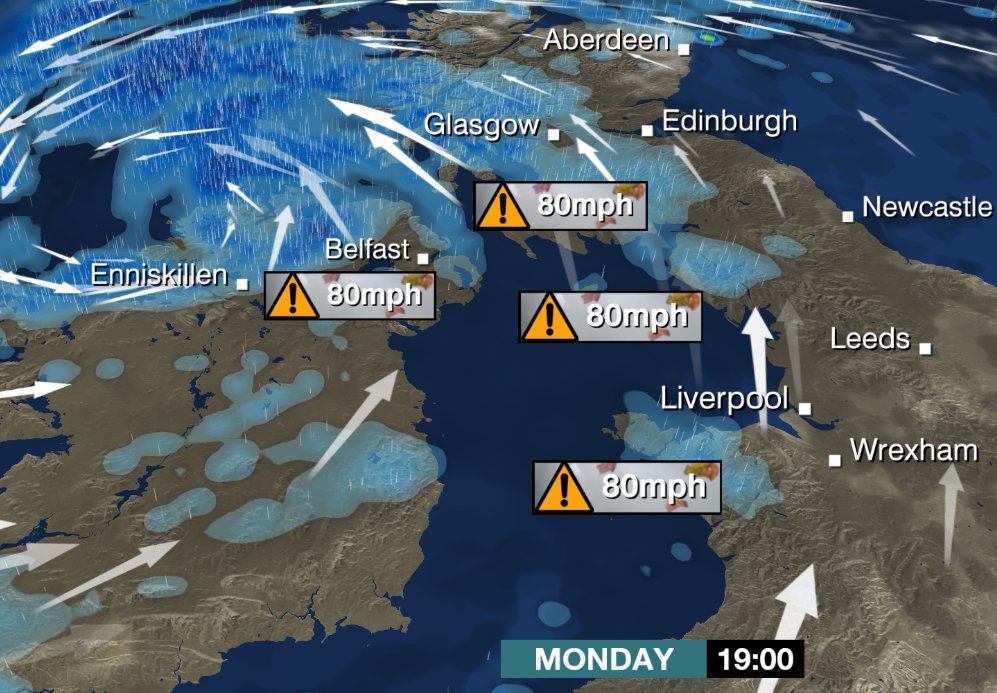It has often been said that Wales’s climate can be described in just three words “Rain, Rain, Rain” and whilst this is true in a large part of the country, it is a generalisation that is slightly wide of the mark (in the same regard that it always rains in Manchester)
As a general rule of thumb, Wales has a pretty equitable climate with the coasts being kept warm in the winter and cool in the summer, and the reverse true for the mountains and heartlands. For instance where I live on the coast of the county of Ceredigion, we get an average annual temperature of 16°C (61°F) which covers a multitude of sins, for instance the recent high has been 21°C (70°F) recorded in July 2013 and the recent low has been 1°C (33°F) during that bitter cold spell in December 2010. Rainfall, as I alluded to at the start, is moderately high (thanks to the fact we live on the coast) but a general rule of thumb is that we average 100mm (4 inches of rain) a month, but like most places that can and does vary from a recent high of 515mm (20½ inches of rain) in November 2009 to a recent low of 26.2 mm (1 inch) in September 2014.
Due to our coastal position snow is a rarity (more’s the pity I say), in fact it is so rare that during the last seven winters (2009 – 2017) we have only had 52 days where snow fell (that’s 14% of all the days) but just as with rain we have seen some big variations ranging from flurries placing less than a centimetre of snow on the ground, to right monsters of a winter with winter 2010-2011 being the mother of all winters, dumping a combined 16½ cm (6½ inches) of snow on the ground and leading to scenes like this

The other problem with the coast is that there is nothing stopping us getting the full force of the wind (save for Ireland and that’s not even visible on the horizon from here) so it should come as no surprise to hear that on average our winds gust up to 20mph, but when we get a storm boy do we know about it as many is the time that our nearest Met Office station at Aberport gets mentioned on the “Strongest Gusts” leaderboard

And when we get these storms, the pressure drops like a stone, whether it’s the winter storm of February 2014 that saw the pressure plunge to 993mb or November 2009 (997mb) but generally speaking we average about 1,010mb, so when we get high pressure, boy do we know about it as demonstrated in February 2012 when we averaged 1,030mb and so therefore as we are fairly average, we get a fairly average distribution of clouds but when they do break as they did in June 2015 out comes the sunscreen (as the average UV index was 6 on an 11 point scale), but those clouds can be a right annoyance, take December 2015 for instance, during the whole month the sun only shone for a day (25 hours out of 248 hours) but this does not detract from the fact that most days here are clear and you can see up to five miles in any direction, so overall I would say that this part of Wales is a very nice place to visit (and in these post Brexit days, we need all the visitors we can get!)

I was surprised to see that the average annual temperature is 16, but that the warmest you’ve gotten in recent years is 21. I know my wife could certainly go for that!
That’s the average maximum. The all time records that I personally have recorded are 35°C (95°F) in 2003 (record high maximum), -13°C (9°F) in 1987 (record low maximum), 23°C (73°F) in 2014 (record high minimum) and an estimated -18°C (0°F) in 1987 (record low minimum) recorded on the night after that -13°C (but estimated as I did not have a maximum / minimum thermometer at the time)